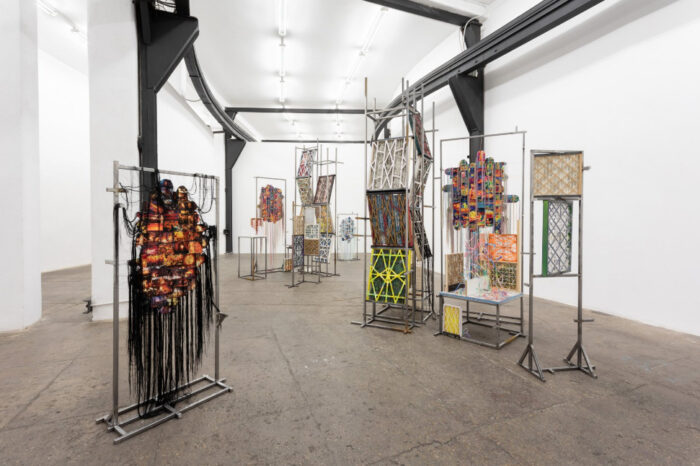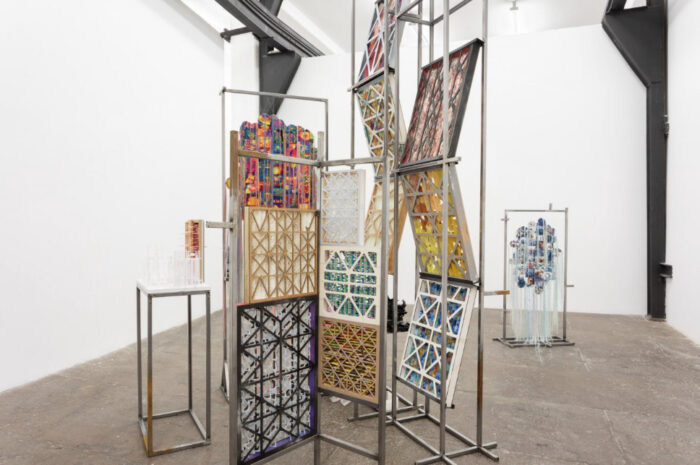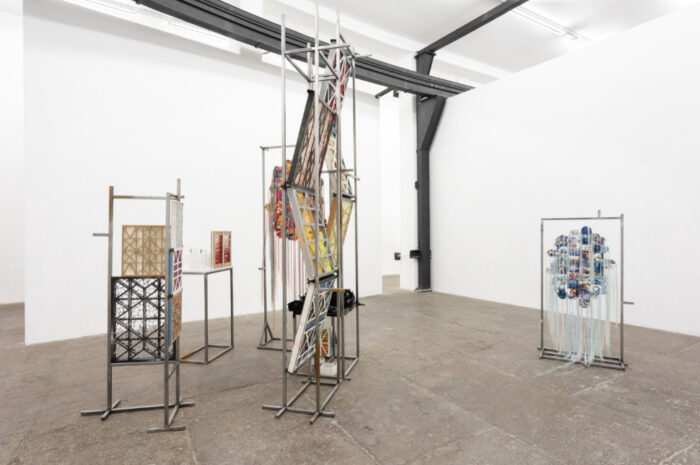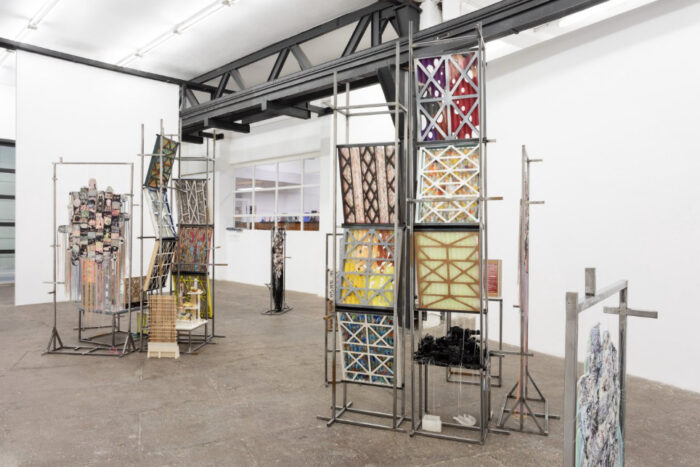





T293 is delighted to present ‘AHU trilogy part I: The Great Filtration’, the second solo exhibition by Taiwanese artist Hao Ni at the gallery.
For the exhibition, Hao Ni presents a new series of work that focuses on the air filtration process within heating, ventilation, and air conditioning (HVAC) systems, as a starting point for a sculptural investigation and improvisation into the way memories and objects flow in the rapidly changing environment that we live in. More specifically, the sculptural installation will delve into the aesthetics of common Air Handling Unit, usually a large compartmental metal structure fitted with air filters, humidifiers, heaters, coolers and fans. AHU is the heart of the central air conditioning system that removes dust and other particles from the collected air, adjusts the temperature and humidity and then supplies comfortable and refreshing air-conditioned air into the rooms through ducts.
As a fundamental part of man-made environment from domestic spaces to airplane cabins, the ability to fine tune the quality and temperature of air around us is more crucial than ever, especially as the environment turns more and more unpredictable and hostile. The more we stay indoors the more we morph into the infrastructures that we created to maintain and regulate our organic bodies. In our time, HVAC systems become the extension of our respiratory system, thermostats become the extension of hypothalami, concrete surfaces become the new layers of our skin, and drainage system becomes the extension of our large intestines, while sewer systems connect the occupants of whole cities physically the same way social media do mentally.
Just like the tiny hair inside our nostrils, HVAC systems usually consist of layers of panel air filters that trap the dirt, grime, soot and dust from the atmosphere in order to purify the air that goes indoors. Excluded outside are the invisible anthropogenic residue from the hostile world that blows in the wind and floats in the air, slowly accumulating on the surface of pleated air filters, growing and forming into shape and appearing like ghosts on photographic films. Solidifying on the surfaces are not only the particles from the dissolved dead and artificial waste, but all together the memories, feelings, stories, and traces of everything during our time.
Mimicking and modeling after the aesthetics and structural language of HVAC units, both traditional methods and digital fabrication techniques are utilized to “filter” the found materials and information that Hao Ni encountered at different times and places. In this work, handmade paper, threads and assemblages of found materials from the cities and nature of both East Asia to Central Europe are molded into pleated shapes to resemble commercial air filters, each resulting in unique abstract textures, colors, and compositions. When all the filters are assembled and fitted in specially designed steel structures, they collectively become singular monumental petroglyphs that thread together the different moments and narratives provided by the individual filter.
Alongside the mixed media filter panels are hanging tapestries made with computerized embroidery machines. The embroidery designs are digitally created by translating found images from thermal cameras as well as images that connote different temperatures through different online search engines. Small embroidery patches are then created and then sewn together carefully to create cumulative textile collages that serve as physical manifestations of the contemporary conception of the different temperature within the context of global pandemic and changing climate.
